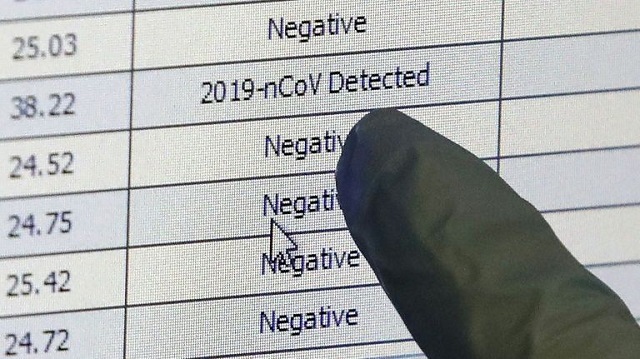
With low test rates, COVID-19 spreads in shadows

Paris, France | AFP | The lack of available tests for COVID-19 means the world is effectively fighting the pandemic blind and may not know the true extent of infection for months if not years, experts said Thursday.
Because COVID-19 is so infectious — roughly 2.5 times that of the common cold — but not everyone presents symptoms, the figure of more than 200,000 confirmed cases tells only a fraction of the story.
On Tuesday the British government conceded it was likely there were already more than 55,000 COVID-19 infections in the country, far higher than the more than 2,600 confirmed cases so far.
Jerry Shaman, a diseases expert at the University of Columbia, told AFP it was “likely” that developed nations are identifying between one in five and one in 10 true infections.
Shaman said there was a variety of reasons, including “test availability, capacity, ignorance (not taking the issue seriously), arrogance (national pride).”
While the number of undetected or non-symptomatic cases likely mean the virus is less deadly than initially feared, low detection rates are a huge problem for governments looking to slow the spread and reduce the strain on health systems.
“Many of these infections are mild but still contagious. So they go about their normal routine — go to work, use public transportation, go shopping — and spread the virus in the broader community,” said Shaman.
“They unwittingly take the virus to new places by auto, train or plane.”
While it is generally accepted that patients showing symptoms are more contagious than those exhibiting no sign of infection, the idea of millions of infected people mixing with vulnerable groups will not comfort governments.
– Speed and scope –
And testing capacity differs hugely, even among rich nations.
Cecile Viboud, an epidemiologist at the US National Institutes of Health, singled out South Korea for praise.
After a surge in cases in February, Korean authorities boosted testing capacity and implemented stringent measures to prevent further transmission.
“A real turning point was the strong increase in testing that they did,” she told AFP.
“You need to know where you are in the epidemic to be able to do something about it. And to do that, you need to test.”
World Health Organization head Tedros Adhanom Ghebreyesus echoed the sentiment on Monday with a simple message for all countries: “test, test, test”.
“If they test positive, isolate them & find out who they have been in close contact with up to 2 days before they developed symptoms & test those people too,” he said on Twitter.
Sharon Lewin, head of the world-leading Peter Doherty Institute for Infection and Immunity at the University of Melbourne, said another good example of testing and then tracing contacts of patients occurred in Singapore.
“Very early on they did aggressive testing and chased down cases through contact tracing, and very aggressively quarantining contacts,” she told AFP.
“They did some social distancing measures, but not as extreme. They closed schools for a while, but only for two or three weeks. They banned meetings, but people still went to work.”
But there is only a small window of opportunity to shut down an outbreak once a cluster of cases emerges.
These seem to have caught authorities in Italy and Spain — the two European countries worst hit by the pandemic — off guard.
As of Wednesday Italy had carried out 165,000 tests, compared with roughly 42,000 in France.
Ultimately, the true impact of the disease worldwide cannot be known until tests for COVID-19 antibodies — for example those patients who had it and recovered — are established.
There are several currently in development.
The post With low test rates, COVID-19 spreads in shadows appeared first on The Independent Uganda:.
0 Response to "With low test rates, COVID-19 spreads in shadows"
Post a Comment